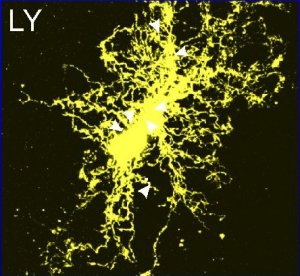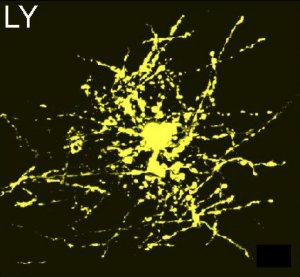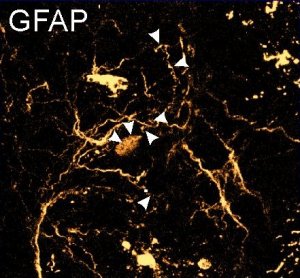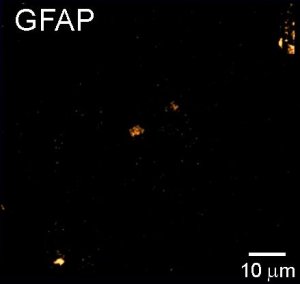GFAP +/+
GFAP -/-




Studies using transgenic animals
Glial fibrillary acidic protein (GFAP) represents the major constituent of intermediate filaments and is specifically expressed in astrocytes. Increased GFAP expression is a characteristic feature of reactive gliosis. GFAP is necessary for the outgrowth of astrocytic processes in the presence of neurons. In view of the apparent importance of GFAP for astrocyte function, mutant “knock-out” mice lacking GFAP have been used in order to further study its function in vivo.
In recent studies, our data have shown that GFAP-/- astrocytes swell less and more slowly than GFAP+/+ astrocytes, suggesting that GFAP plays an important role in cell swelling during physiological as well as pathological states.
To elucidate the influence of extracellular matrix components on diffusion in the extracellular space, we carry out experiments using mutant mice deficient in the expression of the glycoproteins tenascin-R and tenascin-C and HNK-1 sulfotransferase. Besides alterations in synaptic efficacy, a reduction of long-term potentiation and behavioral deficits, these animals also show dramatic changes in ECS diffusion parameters.
In other studies, transgenic animals are being used as a model of Alzheimer’s disease. In these mice, a mutated APP23 gene results in an enhanced tendency for the animals to form amyloid plaques in their brains; these mice also show changes in ECS diffusion parameters.
|
GFAP +/+ |
GFAP -/- |
|
|
|
|
|
|
| Typical membrane morphology and immunostaining of astrocytes for GFAP in GFAP+/+ and GFAP-/- mice spinal cord slices. Cells were filled with Lucifer Yellow and then examined with a confocal microscope. Lucifer Yellow injected cells shown in top figures were immunostained for GFAP. Arrows indicate similar patterns in both images. Bars denote 10 mm. | |